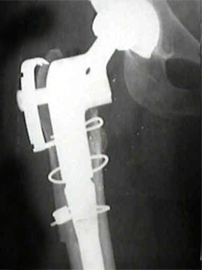Revision Hip Replacement
Revision total hip arthroplasty is a procedure that involves removal of previously implanted artificial hip joint/prosthesis and replacing it with new prosthesis. Further, the surgery may also involve use of bone graft (bone taken from another site of patient’s own body) or allograft (bone tissue is taken from another donor).
Some of the common reason for revision surgery includes failure of cemented hip replacements where the parts become loose/wear out or even break. Further, patients with cementless implants may have improper bonding of the porous surfaces to the bone that need to be replaced through the revision procedure. Other than these, some of the factors that required revision process include:
- Deep sepsis
- Superficial would infection
- Dislocation
- Intraoperative femoral fracture
- Postoperative femoral fracture
- Symptomatic loosening

A much more difficult procedure than first-time surgery, Revision Surgery involves –
- Longer operating time
- Increased blood loss
- May require lengthy hospital stay
The complexity of the procedure depends on –
- Difficulty faced in removing prosthesis
- Quality and quantity of bone left behind after implant removal
- Cutting the trochanter bone to remove the implant
- Use of wires to hold parts together until bone has healed
- Use of bone grafts from pelvis or from bone bank for covering defects
Securing Artificial Hip Joints –
The following techniques are used for securing artificial hip joints by the Surgeons –
Cemented procedure – Surgical cement is used for filling gap between prosthesis and remaining natural bone, thus helping in securing the artificial joint. This procedure is mostly used for patients who are old and thus less active in their daily life as well as patients with weakened bones like in case of osteoporosis.
Non-Cemented procedure – Here, the artificial parts are made of porous material thus allowing patient’s own bone tissues to grow into pores and holding new implanted parts in place. This surgery is preferred on younger and more active people.
Hybrid Replacement – At times Surgeon may use a combination of technique where a cemented ball and a non-cemented socket are used.
